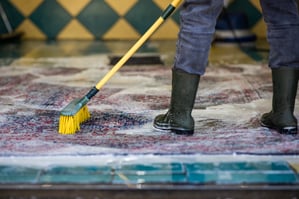Stewardship Principle
One universally agreed-upon concept is the principle of stewardship. According to Wikipedia, stewardship is an ethical value embodying the responsible planning and management of resources. This principle can be applied to various aspects, including environmental health, human health, and the preservation of both soft and hard surfaces, as well as essential resources such as water, energy, and equipment. Prioritizing stewardship in any business involves purpose, research, and clear decision-making. This discussion explores how our industry can integrate pertinent stewardship principles, reflecting a commitment to responsible practices. Stewardship, transcending politics, calls for common-sense decisions aimed at extending the lifespan of furnishings and mitigating landfill accumulation. Though not every application may be universally agreed upon, a shared direction towards responsible stewardship can be pursued, ultimately beginning and ending with this core value.
Preservation of Valued Surfaces

Our fundamental premise asserts that all cleaning practices should enhance the condition of valued furnishings. The IICRC has established standards over the years for cleaning various soft and hard surfaces. Notably, wool—a durable fiber deserving international attention—holds significance in preserving rugs for decades, as exemplified by handmade oriental rugs found in museums, some over two centuries old.
Drawing from twelve years of experience in the oriental rug retail industry, encompassing sales, cleaning, and appraisals, my perspective sheds light on wool as a resilient fiber susceptible to damage from improper cleaning solutions. However, the primary concern lies in the stability of dyes to limit bleeding during water-intensive washing or rinsing techniques. To address this, we've developed the Wool Balance manufacturing standard, featuring 32 approved products specifically tailored for cleaning wool.
The development of Wool Balance revolves around the wool fiber for several reasons. Firstly, the standard for responsibly cleaning wool is straightforward. Secondly, the time and cost involved in obtaining third-party approvals for formulas can be burdensome for a niche professional cleaning industry. Lastly, we believe that current standards may inadvertently allow for the approval of some solutions not entirely suitable for wool. Our 32 Wool Balance formulas adhere to strict criteria, including the presence of an optical brightener, an oxidizer, a reducer, and a ready-to-use pH in the range of 5.0 to 6.0.
Our focus on dye stability sets us apart, as we acknowledge that the method's water content and drying times can impact dye migration. Moreover, our products do not contain artificial dyes intended for wool, and fragrances are limited to below 0.1% in ready-to-use solutions. We advocate for the preservation of the natural wool aroma, enhancing the ambiance of any room featuring a wool rug.
Two key distinctions separate us from others. Firstly, we do not approve shampoos with high-foaming agents for use on wool, as we consider them average cleaners requiring excessive time and water for rinsing. With the availability of counter-rotating brush machines, rotary floor machines have become obsolete. Secondly, our recommendations for a wool rug protector emphasize the inclusion of an acid dye resistor to limit staining, deviating from protectors primarily focused on oil repellency.
Oriental wool rugs represent just one category of fine furnishings that can be preserved through proper cleaning and protection. Fine fabrics, stone, wood, and other surfaces all require maintenance for prolonged enjoyment. Stewardship principles underscore the importance of extending the life of any soft or hard surface. The use of fluorocarbons and polymer-based formulas not only keeps surfaces clean but also preserves their aesthetics, reinforcing the value of these surfaces. The combination of proper cleaning and protection not only preserves valued surfaces but also aligns with green practices by slowing down landfill accumulation—an essential aspect of practicing stewardship.
